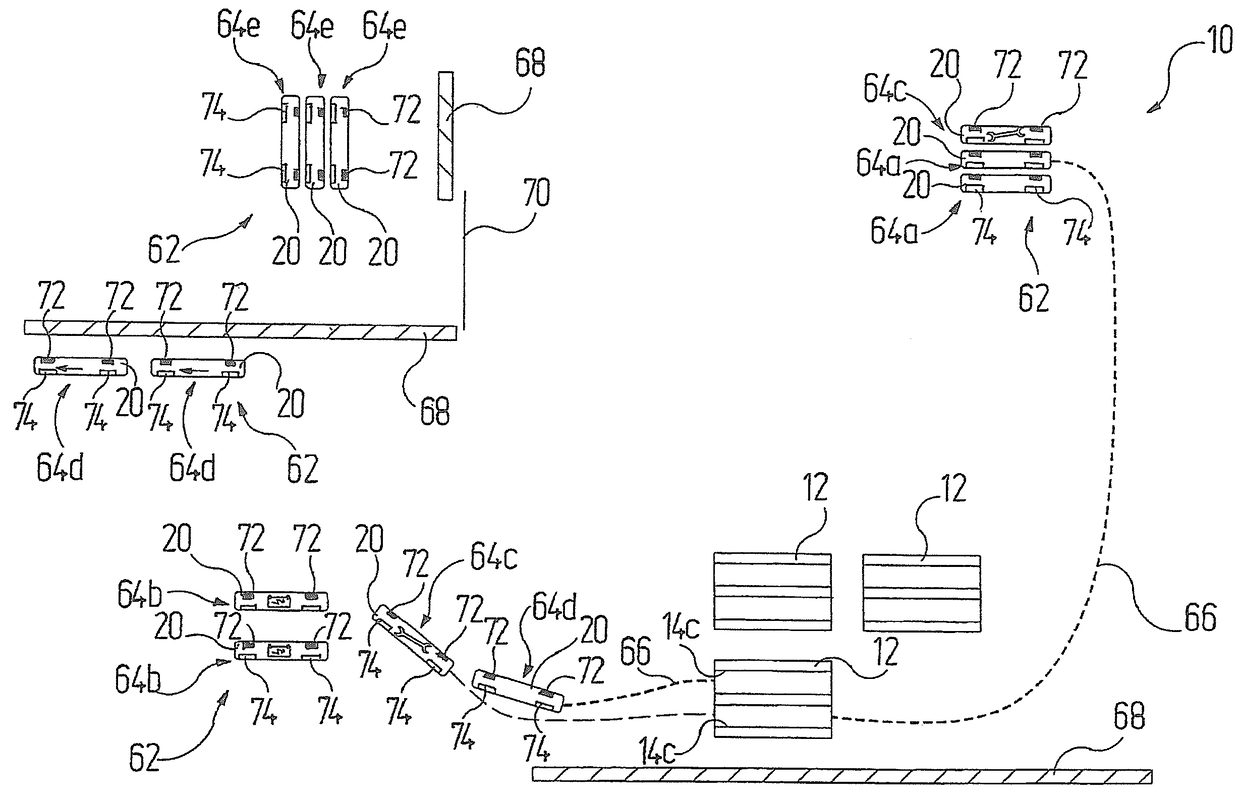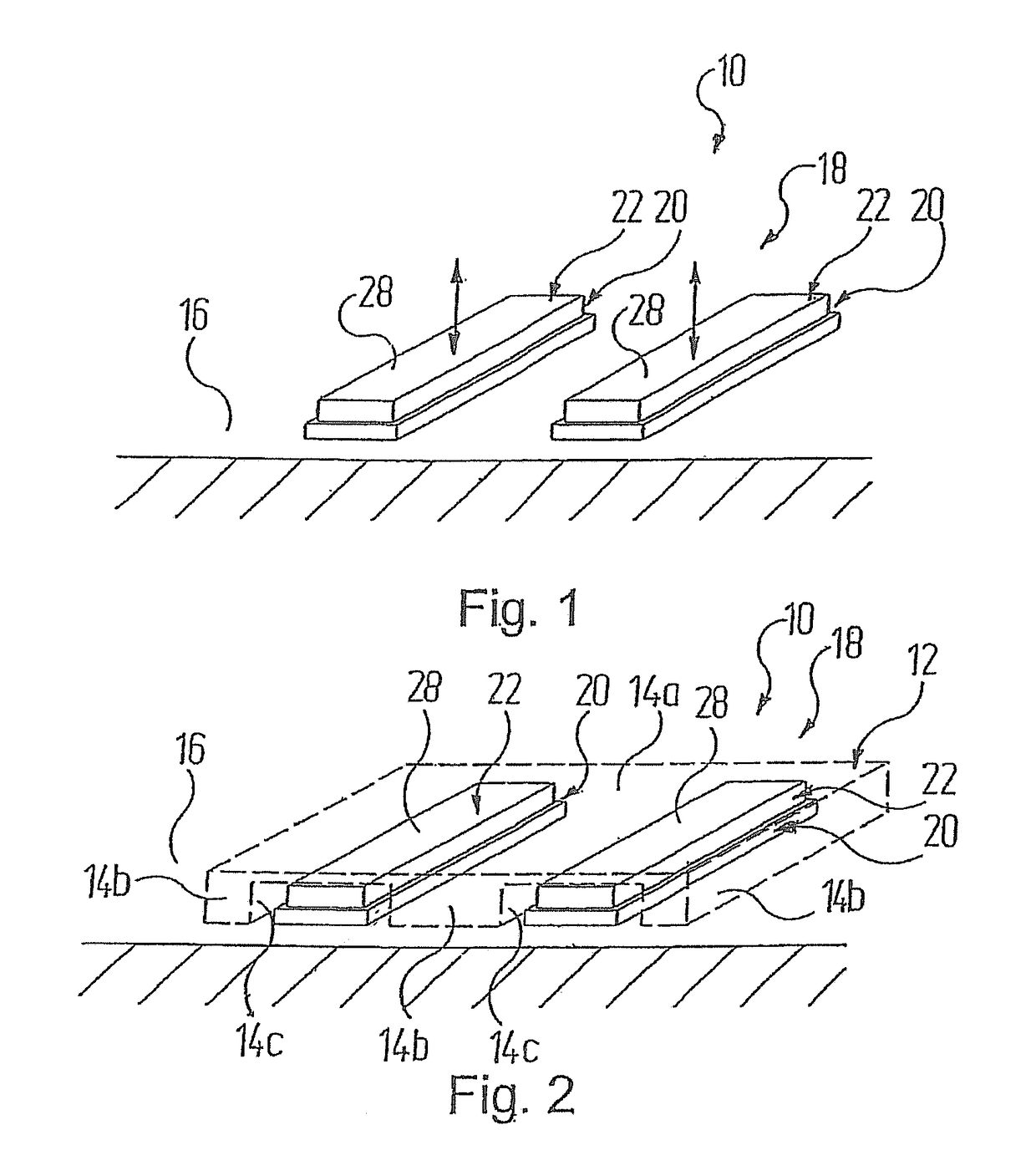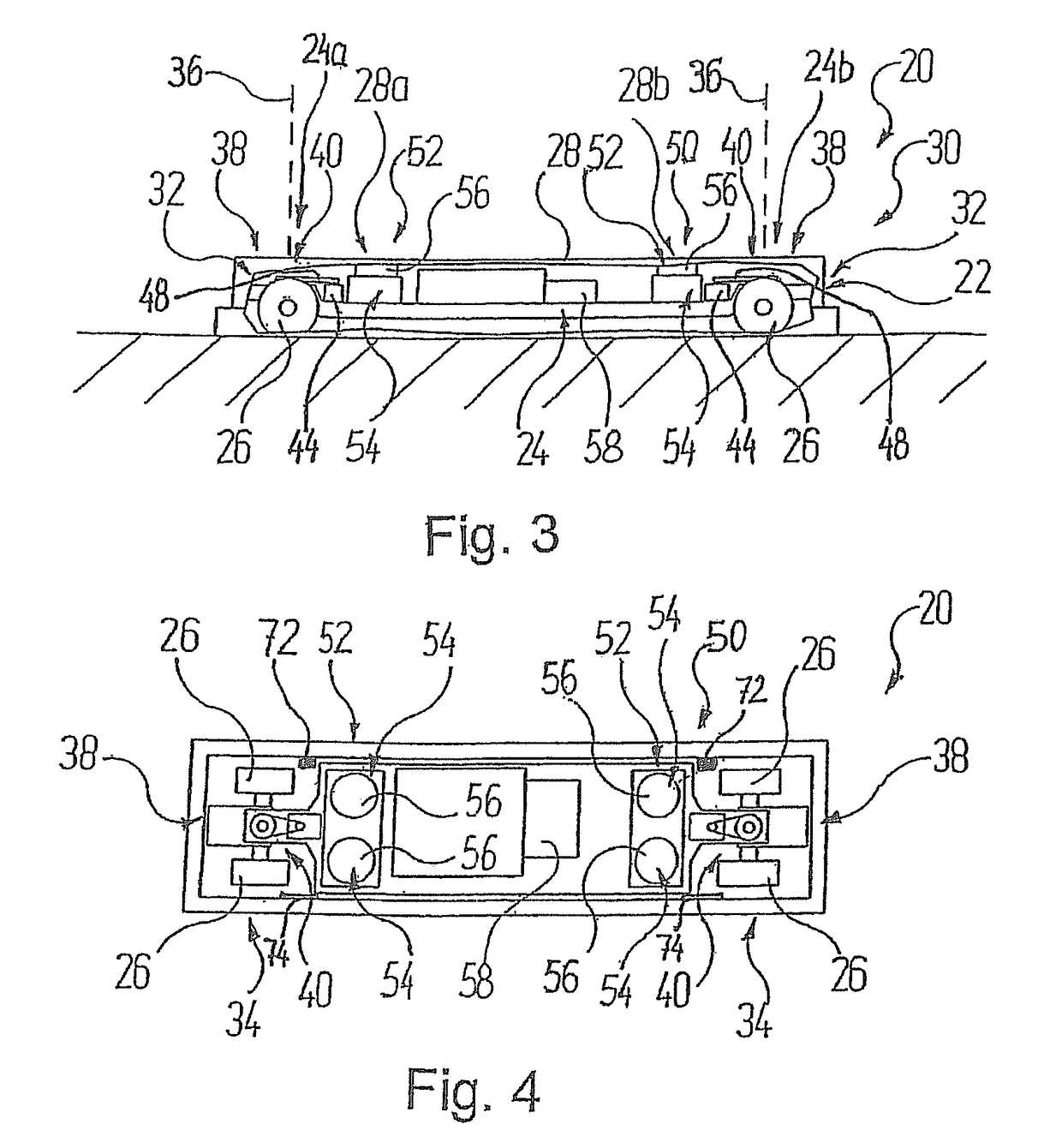Conveyor system for conveying objects and control process for such a system
a conveyor system and conveying technology, applied in the field of conveying systems, can solve the problems of high cost, high cost, and high difficulty of conventional individual control, and achieve the effect of preventing damage to objects or people, and increasing the flexibility of the conveying system
- Summary
- Abstract
- Description
- Claims
- Application Information
AI Technical Summary
Benefits of technology
Problems solved by technology
Method used
Image
Examples
Embodiment Construction
[0038]While this invention is susceptible of embodiment in many different forms, there is shown in the drawings and will herein be described in detail one or more embodiments with the understanding that the present disclosure is to be considered as an exemplification of the principles of the invention and is not intended to limit the invention to the embodiments illustrated.
[0039]Basic Construction of the Conveyor System
[0040]In the Figures, 10 denotes a conveyor system as a whole, by means of which objects—laden or unladen load carriers 12 in this case—can be conveyed. FIG. 2 shows a pallet, such as is known per se, as an example of a load carrier 12.
[0041]A load carrier 12 has a supporting surface 14a on which material to be conveyed (not shown specifically) can be deposited and fastened. The supporting surface 14a rests on a floor 16 by way of bearing elements 14b. A respective opening 14c remains between two adjacent bearing elements 14b and is open downwards towards the floor 1...
PUM
 Login to View More
Login to View More Abstract
Description
Claims
Application Information
 Login to View More
Login to View More - R&D
- Intellectual Property
- Life Sciences
- Materials
- Tech Scout
- Unparalleled Data Quality
- Higher Quality Content
- 60% Fewer Hallucinations
Browse by: Latest US Patents, China's latest patents, Technical Efficacy Thesaurus, Application Domain, Technology Topic, Popular Technical Reports.
© 2025 PatSnap. All rights reserved.Legal|Privacy policy|Modern Slavery Act Transparency Statement|Sitemap|About US| Contact US: help@patsnap.com



